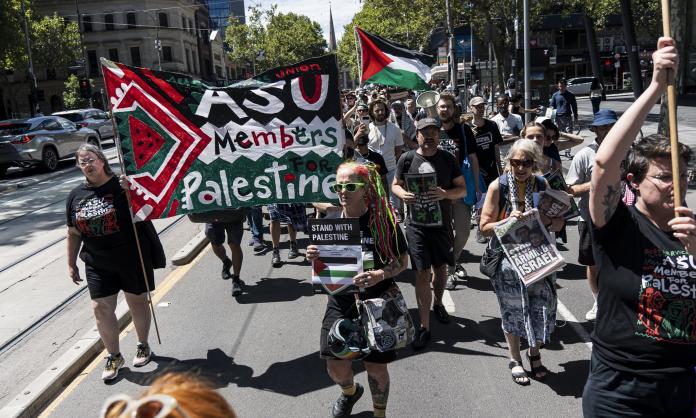A wave of restructuring involving massive job cuts is occurring in higher education – and will gather force over the months and years ahead.
One of the key budget measures is for more government money to flow to private colleges. As the Financial Review recently trumpeted, the “lower cost base” of these private institutions will put intense pressure on existing public universities – which these institutions will try to meet by cutting wages, conditions and jobs.
So a lot depends on how the main union in higher education, the NTEU, responds to the vicious job cuts recently announced at Melbourne and La Trobe universities.
A token campaign will send a signal that the workers are pushovers. The more spirited, determined and better organised the fight back, the better the position workers will be in to challenge the even more dramatic attacks that are on their way.
Logically, step one in fighting the job cuts would be to come out in clear opposition to them.
However, this was not the immediate response at Melbourne University. The early material from the union focused exclusively upon “consultation” rights, without taking a clear position against the axing of 540 general staff jobs. The local branch committee did call a “no job cuts” rally, but promotional materials took weeks to come out.
With less than a week’s campaigning, more than 120 staff turned out to a spirited protest on 25 June. This laid the basis for further action planned for July. But the growth of the campaign will depend upon the union giving a clear lead against cuts and providing more support to members building in their local areas.
Another rally is being held on 16 July to mark the university executive meeting.The picture across the university varies a lot. The library, for instance, has some longstanding union strength, a recent history of activism and a socialist delegate committed to mobilising workers. Workers have confidently confronted management in its bogus “consultation” meetings, and turned out in reasonable numbers to the 25 June rally. Other areas are more affected by years of union decline. Here, the challenge is to use concern over the job cuts to rebuild the union as an active force – one walk-around, one phone call and one conversation at a time. In either case, a strong lead from the union is needed to show it is really committed to opposing the cuts.
At La Trobe, a restructuring plan involving 350 academic and general staff redundancies was unveiled in late June. On 25 June, a cross-campus meeting of 170 voted on a series of motions to oppose the cuts and take action in resistance. These were small but important first steps in building a campaign. The meeting could have focused more on organising campaign activities, but the turnout and spirit showed there is some sentiment on which to build.
In at least one department, staff have organised a local meeting and are working together to fight the cuts. In doing so, they are cutting against the pressure being applied by management, which wants to divide them and make them compete with each other for the remaining jobs.
When management at Sydney University proposed massive job cuts in 2012, a vigorous protest campaign created a sense of crisis on the campus. This contributed to a significant, though partial, victory. Out of 150 academic staff and 200 general staff facing the sack, only 23 forced redundancies resulted at that time.
Job cuts can be seriously challenged and even stopped. For this to happen at Melbourne and La Trobe, modest first steps will have to build into a campaign of protest and non-cooperation.











